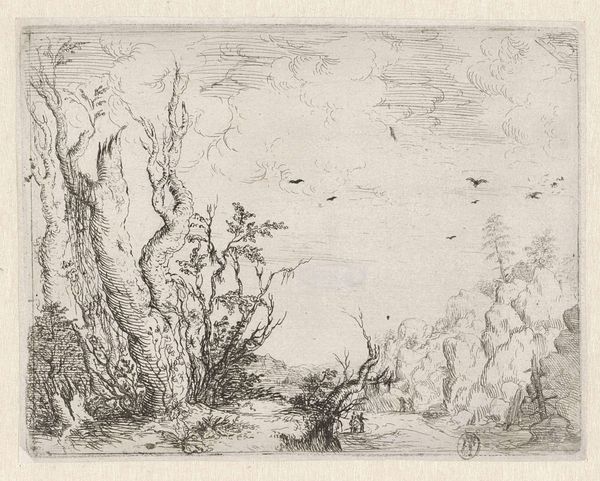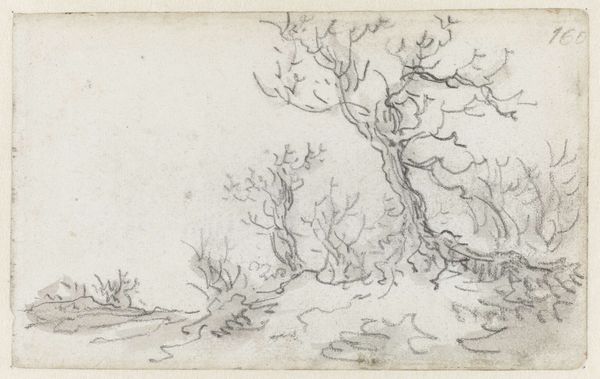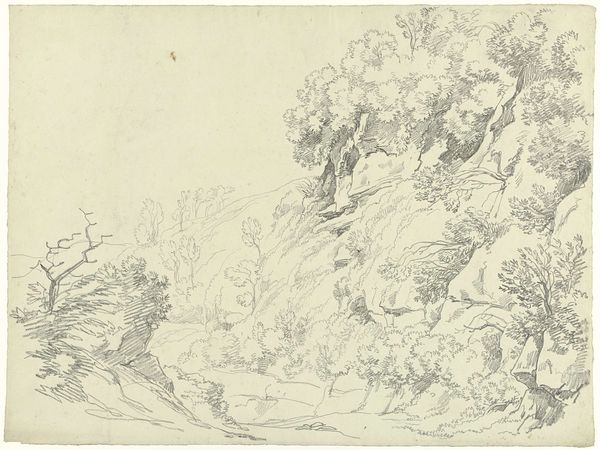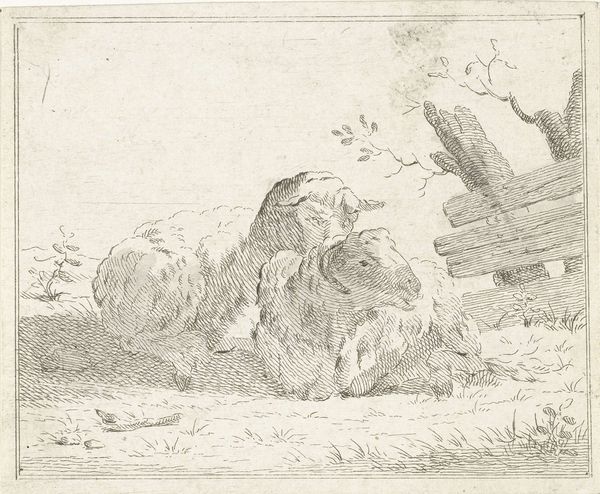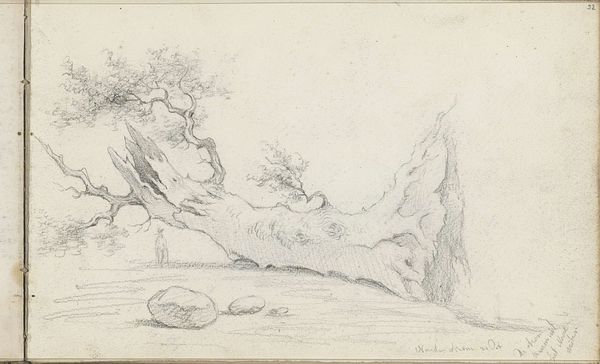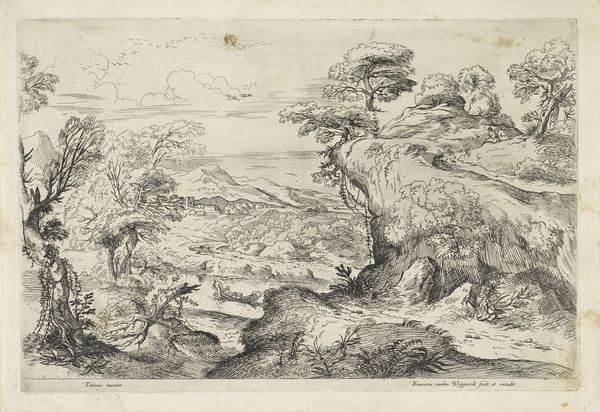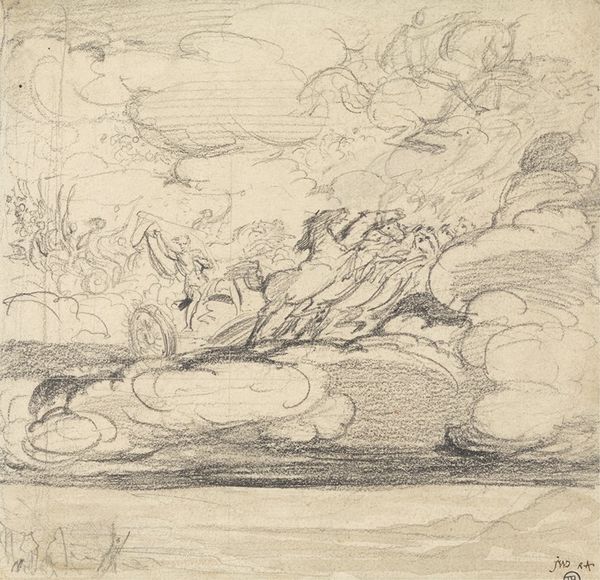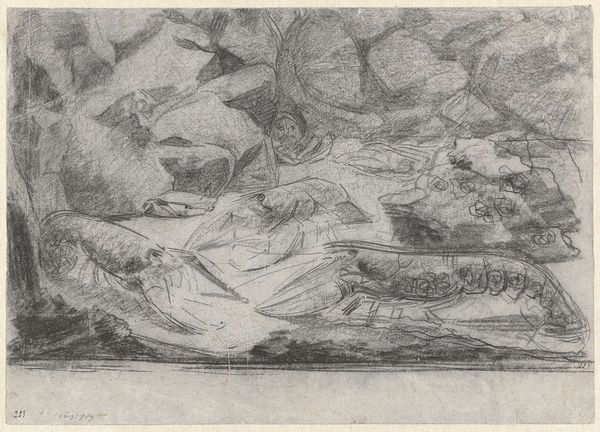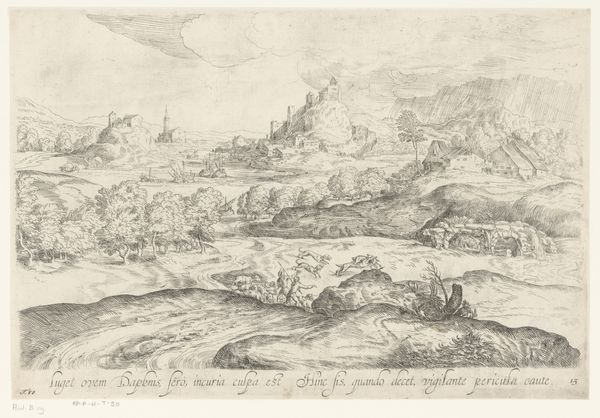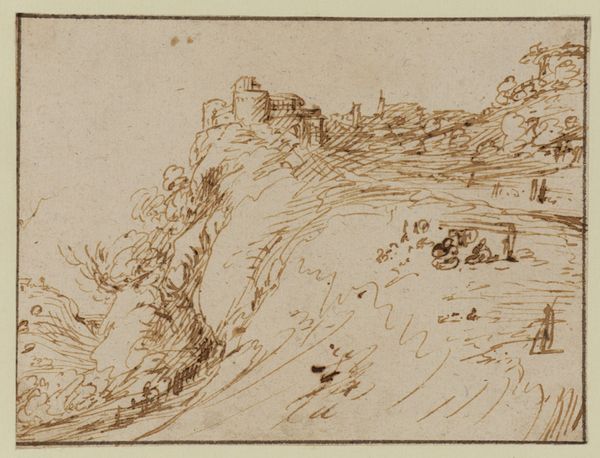
drawing, pencil
#
drawing
#
pencil sketch
#
landscape
#
pencil
#
realism
Dimensions: height 220 mm, width 358 mm
Copyright: Rijks Museum: Open Domain
Editor: So, this is Jan Siberechts's "Kruispunt van twee landwegen," dating sometime between 1637 and 1700. It's a pencil drawing, a fairly unassuming landscape. I'm struck by how empty it feels, even though it's a detailed rendering of nature. How do you interpret this work, particularly considering its historical context? Curator: It's interesting you mention the feeling of emptiness. To me, that speaks volumes about the socio-economic shifts occurring in the Low Countries during that period. Land, especially intersections like this, weren’t just scenic; they represented power, ownership, and the burgeoning market economy. Editor: In what way? It seems so… pastoral. Curator: Consider the meticulous detail. It’s not just depicting a landscape; it's mapping a space of transit, of exchange. Who controls these crossroads? Who profits from the movement of goods and people? These "empty" spaces were ripe for exploitation. Does the artist romanticize this exploitation, or subtly critique it by revealing a land stripped of its inherent value? The starkness makes me wonder. Editor: So, you see the drawing less as a simple landscape and more as a statement about early capitalism? Curator: Precisely. Look at the lines - are they celebrating the potential of these spaces or illustrating the cold efficiency that begins to dominate our relationship to nature? Who gets to determine the 'value' of a crossroads, and who is excluded from this valuation? Editor: That definitely gives me a lot to think about. I came in seeing just a quiet scene, and now I see layers of power dynamics and social commentary. Thanks for shifting my perspective. Curator: It’s all about asking who benefits, who suffers, and who gets to tell the story in the landscape, isn’t it? That is why art matters, because that dialogue changes with every new comer!
Comments
No comments
Be the first to comment and join the conversation on the ultimate creative platform.

